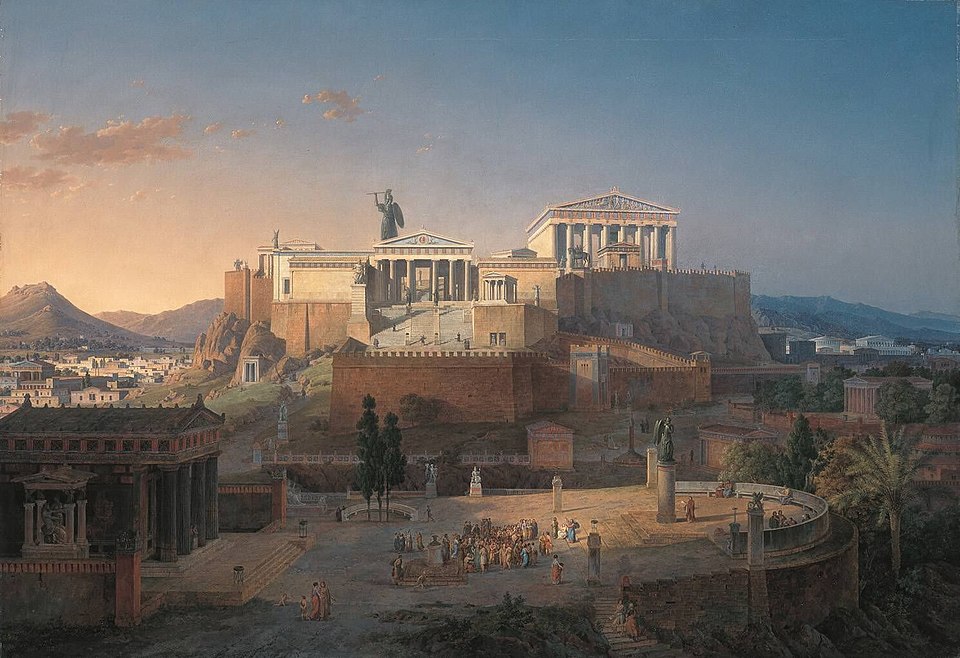Debt in Ancient Greece
When interest-bearing debt came west to Greece, it was decoupled from Clean Slates. This opened the way for oligarchic abuses.
Introduction
Though there are no economic records from the Greek Dark Age (1200-750 BC), it seems to have been a period of warlord chieftains monopolizing the land and reducing much of the population to clientage.
Although interest-bearing debt did not yet exist, there were formal debt-collection procedures for wergild type debts, mainly for legal restitution of damages. Payments to the victims of injury or their families (and also bride-price and dowry payments) typically took the form of movable assets such as livestock, or servant-girls. These payments played no fiscal role, because they were to families, not to temples, palaces or the state. Fines for breaking noses and manslaughter hardly were “commodity transactions” or negotiated through the marketplace. The victim was not a “creditor” in the modern sense of the term, but an injured party to whom a liability was owed. Such fines were part of reciprocity and gift exchange.
Interest-bearing debt in Greece
After the transmission of interest-bearing debt from Mesopotamia to the West around the 8th century BC, most interest in classical Greece was charged by (and to) outsiders, typically aliens or slaves working for them. Benjamin Nelson (1949) has described that the essence of usury is “otherhood,” in contrast to the brotherhood of mutual aid[1]. Gifts typically are reciprocated among equals, and it was deemed ungentlemanly to charge interest to one’s social peers. Even as classical Greek society was succumbing to usury from the 6th century BC onward, aristocrats refrained from charging interest on loans to each other via eranos (mutual-aid) societies.
Emergence of proto-oligarchic class
The adoption of interest-bearing debt in Greece in the 8th century roughly coincided with a period when city-states had overthrown kings in favor of oligarchies. As Greek society became increasingly oligarchic, the most powerful families blocked central authority to limit land appropriation and creditor claims. A wealthy class emerged, which wanted to abolish the power of rulers to protect debtors from losing their liberty and land when debts couldn’t be paid. Defaults and foreclosures led to the concentration of land and wealth ownership in the hands of a now hereditary aristocracy. This would become the economic dynamic of classical antiquity.
For debtors in this period, a free market in land meant loss of their own self-support and liberty. Wealthy families increasingly started taking smallholders’ land for themselves, especially in Southern Italy (then Magna Grecia).
“Tyrannical” Revolts
In the 7th and 6th centuries BC, these autocracies were overthrown by “tyrants” and other social reformers throughout Greece, from the Corinthian Isthmus down to Sparta with its radical “Lycurgan” reforms. This was also the context for Solon’s reforms in Athens.
All these city-states reinvented their own land tenure arrangements on an ad hoc basis. The new, less anarchic systems allotted land to soldiers (the demos). This was easiest to achieve on land that was conquered or where new colonies could be established.
According to legend, these 7th and 6th-century revolts featured a combination of land redistribution and cancellation of the debts that obliged subjects to work the land of their creditors. Sparta’s 7th-century reforms were the most radical. The local oligarchy retained its land monopoly in Sparta itself, but assigned the lands it conquered and their populations to serve as helots producing food for the rest of the citizenry.
In Corinth, the Cypselid family reorganized the city to make it a commercial center and put in place a self-supporting population by land redistribution and apparently debt cancellation. Athens experienced a series of crises that peaked in 594 when Solon was appointed archon (“dictator”) to cope with the same problems of land monopolization and debt slavery that had brought tyrant-reformers to power in other cities.
Solon canceled personal debts and banned debt slavery outright. He was widely expected to redistribute the land as reformers had done in other cities, but he only removed the horoi stones demarcating absentee land ownership (debtors still owed labor services, but remained free citizens, not slaves.) He also banned landownership by foreigners, thereby preventing foreign creditors from foreclosing on Athenian land.
Such measures were short-lived. After the 6th century BC, creditors in Greece were strong enough to prevent debt cancellations and land redistribution. The wealthiest families avoided fiscal obligations and defeated attempts by popular leaders to cancel debts and redistribute the land. Sparta’s kings Agis IV and Cleomenes III sought to do this in the late 3rd century BC but were defeated by neighboring oligarchies, which called on Rome to defeat Sparta. Within half a century, Rome would conquer, devastate and loot all of Greece, finishing off the devastation in the Mithridatic Wars (88-63 BC).
- ↑ Nelson, Benjamin N. The Idea of Usury: From Tribal Brotherhood to Universal Otherhood. 1st ed., Princeton University Press, 1949.



